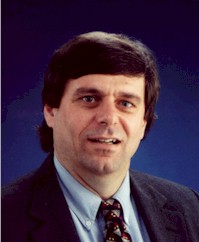 |
|
|
|
图文-高尔夫草坪研讨会 THOMAS W. FERMANIANhttp://sports.sina.com.cn 2008年01月11日10:45 新浪体育
 新浪体育讯 trong> THOMAS W. FERMANIAN EDUCATION OKLAHOMA STATE UNIVERSITYSTILLWATER, OKLAHOMA 1978 to 1980Received Ph.D. in Crop Science, July 1980. Major work in Turfgrass Management with an emphasis in bentgrass nutrition and turf weed control. Thesis title, "THE ISOLATION OF A TOXIN FROM SPRING DEAD SPOT AREAS IN BERMUDAGRASS (CYNODON L. C. RICH.) TURF" 1976 to 1978Received M. S. in Agronomy, May 1978. Major work in Turfgrass Management. Thesis title, "EFFECT OF TWO PREEMERGENCE HERBICIDES ON THE GERMINATION AND GROWTH OF FOUR SEEDED BERMUDAGRASSES (CYNODON DACTYLON (L.) PERS.)" OREGON STATE UNIVERSITYCORVALLIS, OREGON 1974 to 1976Post baccalaureate work. Completed course work to fulfill undergraduate deficiencies and prepare for graduate work in plant ecology. UNIVERSITY OF WISCONSIN-WHITEWATERWHITEWATER, WISCONSIN 1968 to 1972Received B.S. in Biology, May 1972. Major in Botany and minor in Chemistry. EXPERIENCE UNIVERSITY OF ILLINOIS AT URBANA-CHAMPAIGNCHAMPAIGN, ILLINOIS 2007 to presentAssociate Professor Emeritus of Turfgrass Science, Department of Natural Resources and Environmental Sciences. 1994 to 2007Associate Professor of Turfgrass Science, Department of Natural Resources and Environmental Sciences. Position split between research (70%) and teaching (30%) Basic research program in developing software tools for golf course management. Applied research program conducted in the areas of turfgrass cultivar evaluation, weed control, plant growth regulation, and the modeling of turfgrass management practices. 1986 to 1994Associate Professor of Turfgrass Science, Department of Horticulture. Position split between research (55%) and extension (45%) Basic research program in developing Expert System tools for agricultural domains. Applied research program conducted in the areas of turfgrass cultivar evaluation, weed control, plant growth regulation, and the modeling of turfgrass management practices. Extension duties involve state-wide leadership in planning, conducting, and evaluating turfgrass extension programs. 1988 (3 months)Visiting professor, Department of Computer Science, George Mason University, Fairfax, VA. Developed microcomputer expert system development program and plausible reasoning system for grass identification. 1983 to 1988Associate Member of the Intelligent Systems Group, Department of Computer Science. Directed development of PC?based machine learning tool with facilities to build expert systems. 1980 to 1986Assistant Professor of Turfgrass Science, Department of Horticulture. EXPERIENCE (Cont'd) OKLAHOMA STATE UNIVERSITYSTILLWATER, OKLAHOMA 1974 to 1980Graduate Research Assistant, Department of Agronomy. Supervised 3 to 8 student employees in the process of maintaining field research center. 1974, 1975Laborer at grass seed farm, Corvallis, Oregon. Foreman, 1975. BEATRICE FOODS CO.BELOIT, WISCONSIN 1972 to 1974Assistant Director of Quality Assurance. Duties involved the supervision of 7 lab technicians. Assisted Director of Research when time permitted. AWARDS AND HONORS Outstanding Master's candidate 1978, OSU Outstanding paper, C-5 division 1979 Annual ASA meeting Who’s Who in the Computer Industry, 1990 Listed on Spring 1990 “ Incomplete List of Teachers Ranked as Excellent by their Students “ Who’s Who in Science and Engineering, 1992, 1994 Who’s Who in the Midwest, 1993, 1995, 1996 Who’s Who in the World, 1994 Finalist, 1994 AMOCO Foundation Award for Innovation in Instruction Scientific Advisor for the International Foundation for Science Karl E. Gardner Outstanding Undergraduate Adviser Award, 1999 Academy of Teaching Excellence, College of ACES, University of Illinois 1999-2002 Distinguished Service Award, Illinois Turfgrass Foundation 1999 Gamma Sigma Delta 2000 SCIENTIFIC ORGANIZATION MEMBERSHIPS American Association for Artificial Intelligence American Society of Agronomy American Society for Horticulture Sciences Institute of Electrical and Electronics Engrs. International Association of Knowledge Engineers International Turfgrass Research Society Weed Science Society of America PATENTS AND LICENSES Integrated Pest Management Systems, Inc., software license, 1997 Turfgrass Nutrition for the Golf Course Thomas W. Fermanian, Professor emeritus University of Illinois at Urbana-Champaign While mowing and pest management are more costly and time-consuming, proper turfgrass nutrition is equally important in maintaining high quality playing surfaces. Maintaining proper turf nutrition is a process of supplementing or “topping off” the nutritional needs of a turf through fertilization. The majority of turf nutrients are supplied to the turf through the conversion of unavailable elements in the soil. The golf course superintendent’s challenge is to accurately monitor nutrient availability while providing nutrients, through fertilization, to provide optimal growth. Fertilization can also be used as a tool to impact the playability of the different surfaces used in the game of golf. Greens speed, divot and ball mark repair, landing area properties and pest management are all highly influenced by changes in fertilization programs. A discussion on the timing, quantity and source of fertilizer materials used on tees, greens and fairways is useful to understand their influence on the playability of these surfaces. Application techniques, like foliar feeding, provide additional options in managing golf turf. The selection of appropriate nitrogen sources to match seasonal needs can be critical. Fertilizer technology has changed dramatically over the past 20 years, particularly in the area of slow release nitrogen sources. While nitrogen is the primary tool for controlling turfgrass growth, phosphorus and potassium are also critically important in managing turf health and long-term quality. A discussion on the appropriate use of supplemental phosphorus and potassium fertilization will help extend the superintendents arsenal of tools to maintain high-quality turf. Recently, the use of “natural”, “organic”, or “naturally-derived” fertilizer sources has raised the question of their appropriate use and value on the golf course. Traditionally, these fertilizer sources were all relatively slow-release, relatively insoluble and messy to use. This often led to poor playing conditions, particularly on greens. Newer soluble, natural nitrogen sources are now available that provide an alternative to traditional synthetic nitrogen sources. These materials may be particularly useful on greens.
|
||||||





